Thanks to its epic karst landscapes, mouth-watering food, insanely bustling cities, and distinct culture, Vietnam is an absolutely classic Asia travel destination.
Where you travel in Vietnam will have a big impact on your trip, however, and you’ll no doubt have some tough choices to make. To help you out, let me highlight some of the top places to visit in Vietnam.
Plan your trip to Vietnam
Top places to visit in Vietnam
Just need to know where to start your trip research?
Then I’ve got you covered with some quick answers:
| Best For… | Places in Vietnam |
|---|---|
| Classic highlights | Hanoi, Ha Long Bay, Hue, Hoi An, Ho Chi Minh City (all the “H” destinations!) |
| City life | Hanoi for history/traditional ambiance/markets, Ho Chi Minh City for nightlife & energetic vibe |
| Nature & wildlife | Ba Be National Park, Phong Nha, Cat Ba National Park |
| Trekking & hiking | Sapa, Phong Nha, Da Lat |
| Islands | Cat Ba, Phu Quoc (more commercial resorts), Con Dao Islands (more laidback) |
| Temples & ruins | Pagodas near Hue, Cham temples in My Son near Hoi An |
| War history | DMZ near Hue, Cu Chi Tunnels and War Museum in Ho Chi Minh City |
| Less touristy places | Ha Giang, Con Dao Islands, Phong Nha, Ba Be National Park |
1. Hanoi
Experience the frenetic northern capital
No other place in Southeast Asia gave me more of a sense of wonder than the first time I visited Hanoi. It’s truly a frenzied place. There are so many motorbikes rushing through the streets that it sometimes feels like you’re caught in a giant swarm of wasps. So much of life takes places on the street; people eat and drink there, get their haircut, read the newspaper and play games.
Having visited multiple times now, I put together some insider tips on how to get the authentic Hanoi experience.

2. Ha Long Bay
Cruise around stunning karst islands
Ha Long Bay probably needs little introduction! This UNESCO World Heritage site is easily Vietnam’s most famous. The bay is home to over 2,000 small limestone islands, scattered around an area of 334 km2.
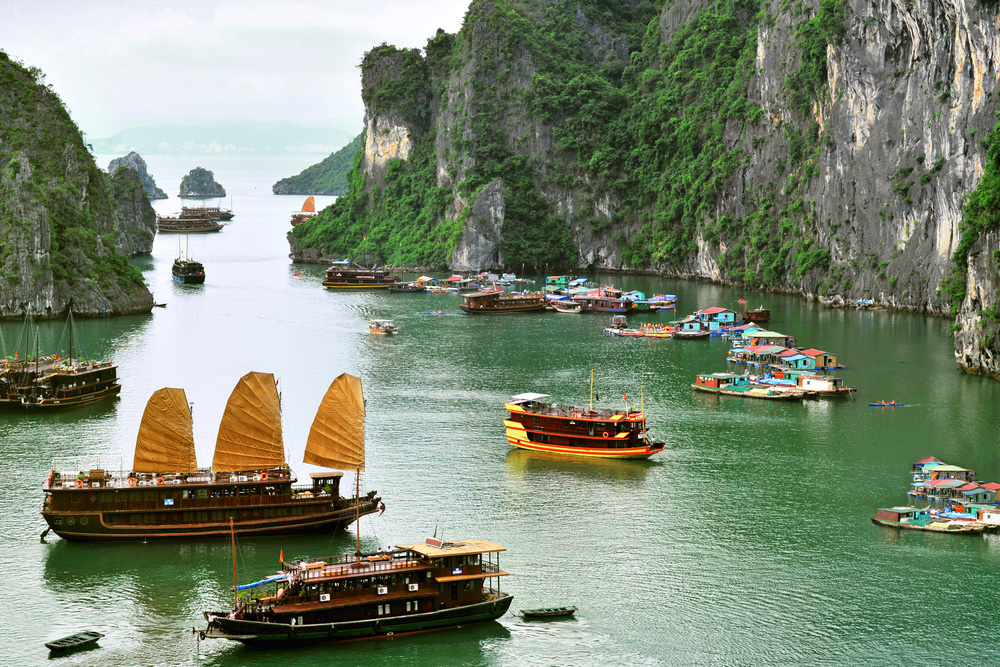
The typical way to visit is to book a cruise on a sailing boat, with trips ranging from 1 to 3 days. You can check out a 2-day Ha Long Bay trip here.
It’s no doubt a must-visit in Vietnam. The location is magnificent and definitely worth it, though expect it to be very touristy. Most boats cluster around a single bay where there are several viewpoints and caves and here it can get very crowded.
For the best experience, go for at least a 2-day cruise, so that you’re not in a rush. Also consider tours that include the Bai Tu Long Bay or Lan Ha Bay. These are also part of Ha Long but because they’re a bit further from shore they are quieter and have fewer day-trippers.
3. Cat Ba Island
Stay on the large island near Ha Long Bay
Cat Ba is a less-touristy alternative to some of the islands in Ha Long Bay. It is still popular and so there is some tourist infrastructure in the island’s main city, but most of the island is a protected wild jungle begging to be explored.
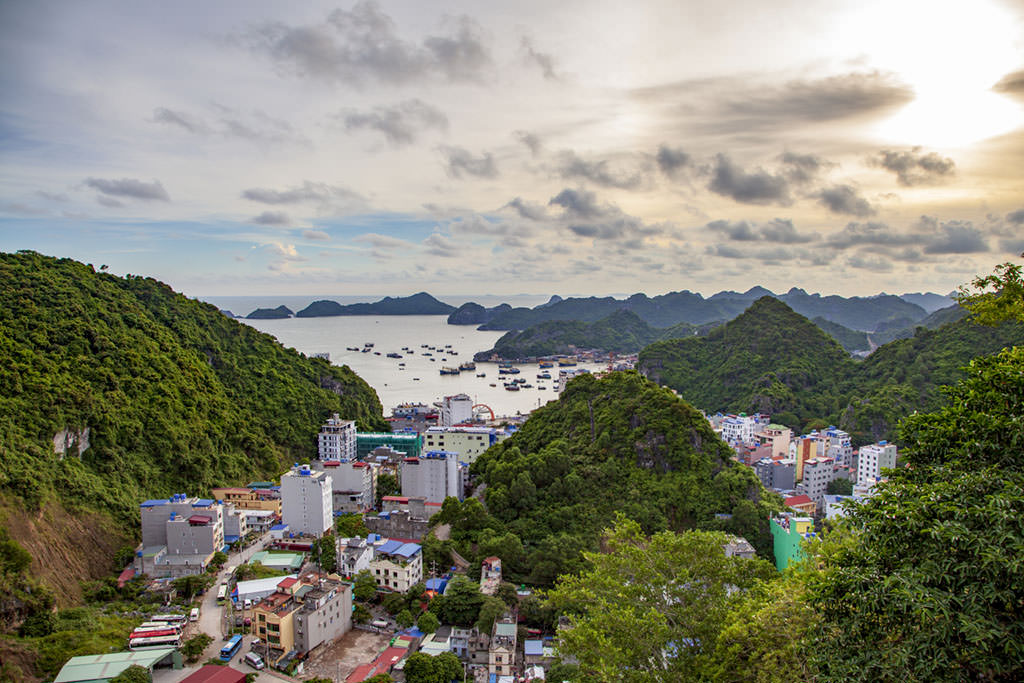
It has three main beaches perfect for a lazy day sunbathing or swimming, but if you’d rather do something active, you can snorkel or rent kayaks from the beach or rock climb the steep limestone rock face. Day trips are easy from Ha Long Bay, with three daily ferries that dock on the island’s northern coast. It’s a 40-minute drive to Cat Ba City, with buses and taxis to take you there.
You can get around most of Vietnam pretty easily using buses and taxis, but for the most flexibility, mopeds or motorbikes are the best way to explore Cat Ba.
4. Sapa
Stay or hike among terraced rice fields
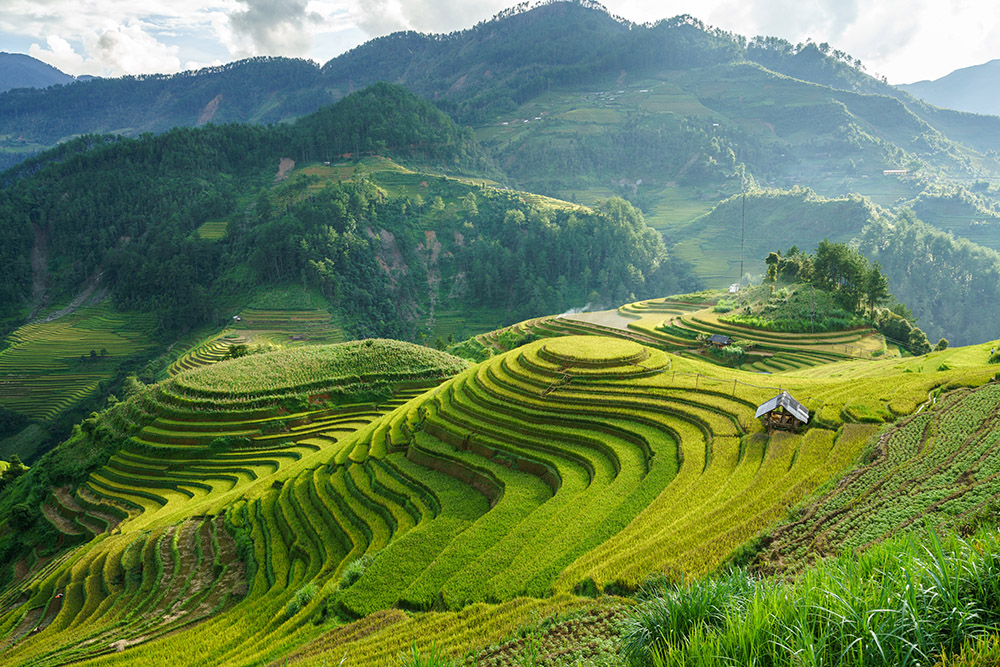
During French colonial times, the occupiers found in Sapa a suitable retreat to flee the scorching heat of Vietnam’s lower lands. Today, it’s a popular starting place for mountain trekking, as well as a favored spot for rural homestays.
My number one tip for Sapa is to not stay in the town itself if you can, as it’s seen quite a wild growth of hotels, massage parlors, and tourist restaurants. Think of it as a convenient hub, not the destination itself, which is very much the surrounding area.
The best way to enjoy Sapa is to book a homestay just out of town amid the rice fields, or in a nearby village. Another great way to experience Sapa is to trek the trails between the highland villages of local minority tribes, including the Hmong and Lao Chai people.
The rice terraces are greenest from July to September. They’re golden yellow around harvesting season in September and October.
5. Ninh Binh
Stay among the karst cliffs in the ‘Ha Long Bay on land’
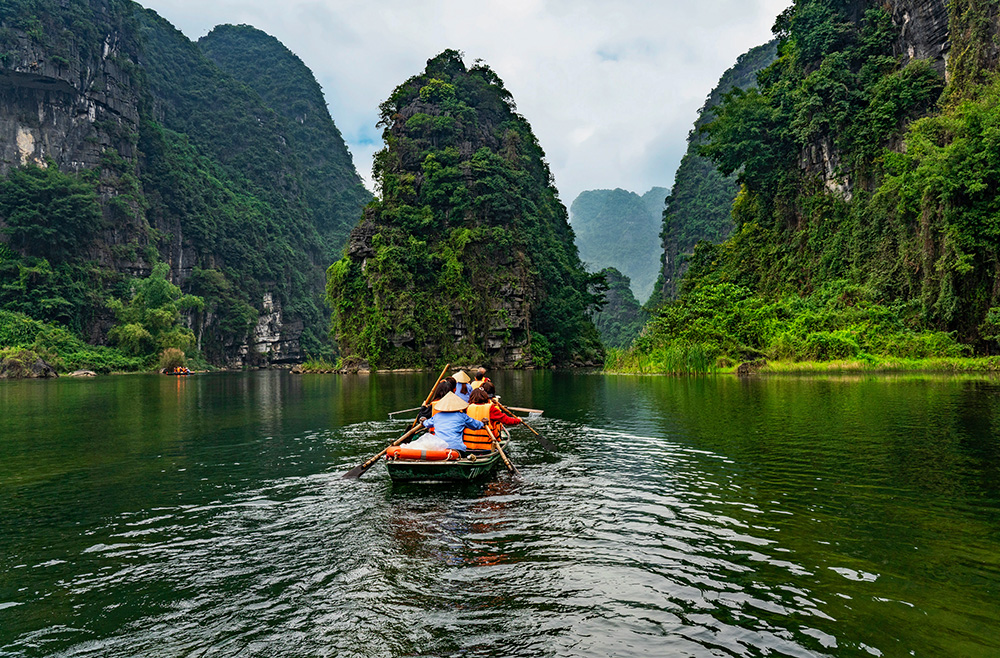
In the national park of Trang An (and Tam Coc) you’ll find beautiful karst mountains poking out of the landscapes. Different from Ha Long is that they are surrounded by rice fields and wetlands instead of the sea. The main activity is to take a paddleboat through the rivers and wetlands to see the stunning mountain scenery, caves, and wildlife.
Ninh Binh can be done as a day trip from Hanoi, but it’s worth staying a night or two for the full experience. I especially recommend staying in the town of Trang An at the edge of the park, which is truly a hidden gem.
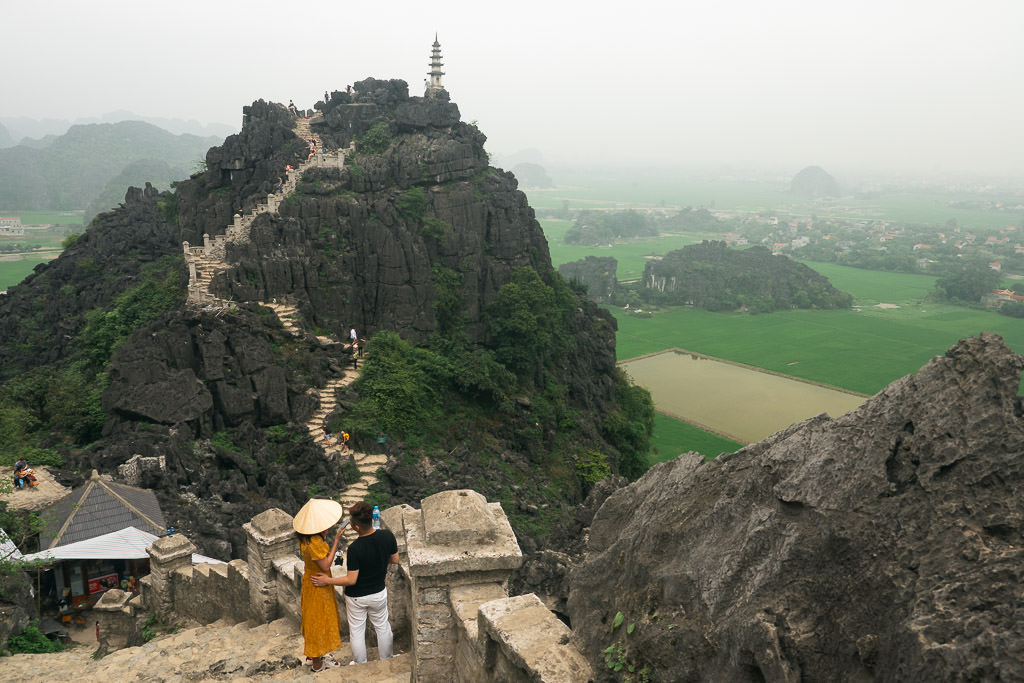
There you stay in guesthouses and eco-resorts along the river with cute bamboo docks with deck chairs and fairy lights.
You can read much more tips for Ninh Binh in my detailed guide.
6. Ba Be National Park
Outdoor adventures in northern Vietnam
Located in the mountains of northeast Vietnam, it’s no easy task to get to Ba Be, but it’s one of the most authentic traveling experiences you can have in Vietnam due to its being undiscovered by most tourists.
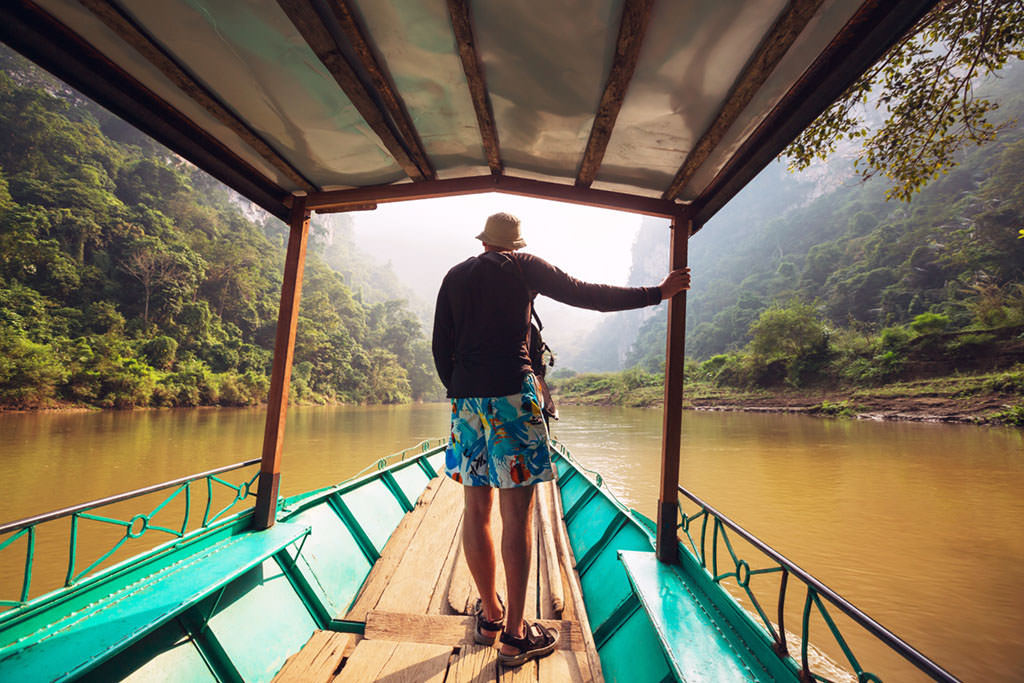
There are lots of group tours that you can do in Ba Be, like cycling tours, waterfall hikes, cave expeditions, and overnight camping. Most of these are organized through local companies and they’re easier than trying to visit independently.
Be prepared for a long journey to get there. It’s possible to rent motorbikes, but you’ll be looking at an 8-hour ride to get there from Hanoi, so you’re better off taking a bus from My Dinh bus station, or a direct shuttle from Hoan Kiem district (both in Hanoi).
7. Phong Nha Ke-Bang
Marvel at the world’s biggest caves
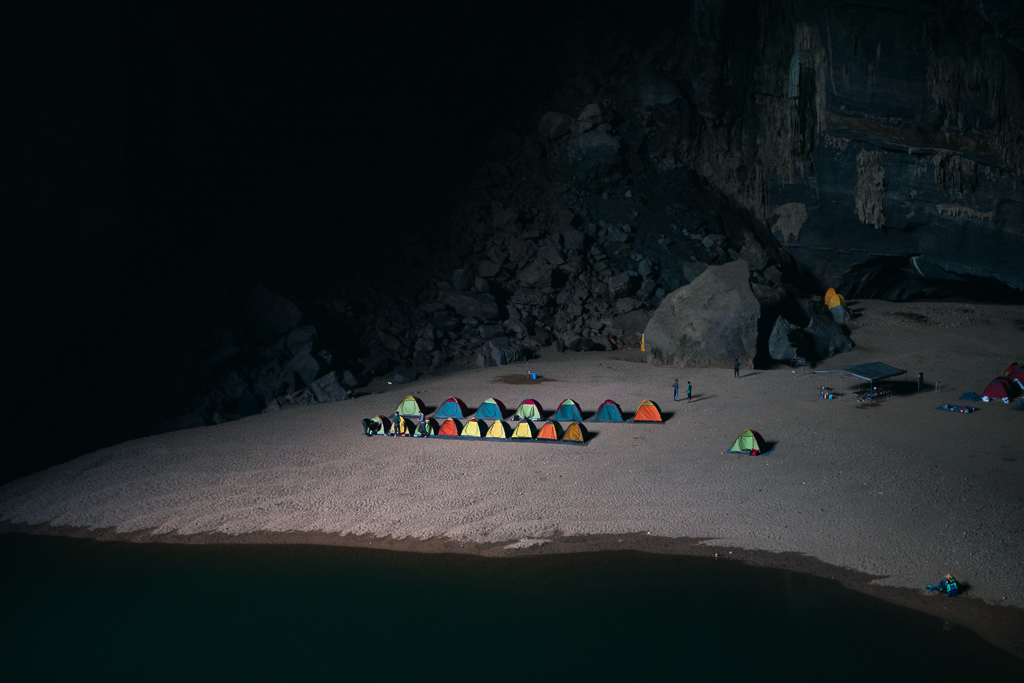
The national park of Phong Nha ke-Bang in central Vietnam is known as one of the best places to go caving in Asia. In recent years it’s truly become the adventure travel and ecotourism capital of Vietnam.
There are over 500 caves in the area of which 30 can be visited by the public. These include the world’s biggest cave and the world’s third-biggest cave, which are truly epic locations and quite possibly the most spectacular in all of Vietnam.
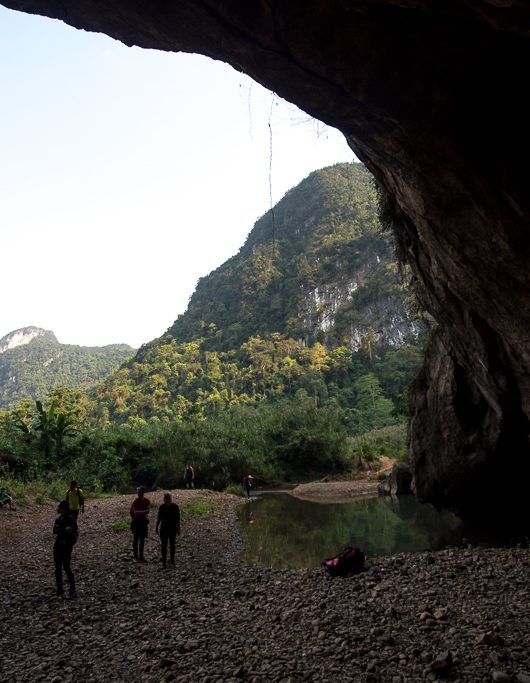
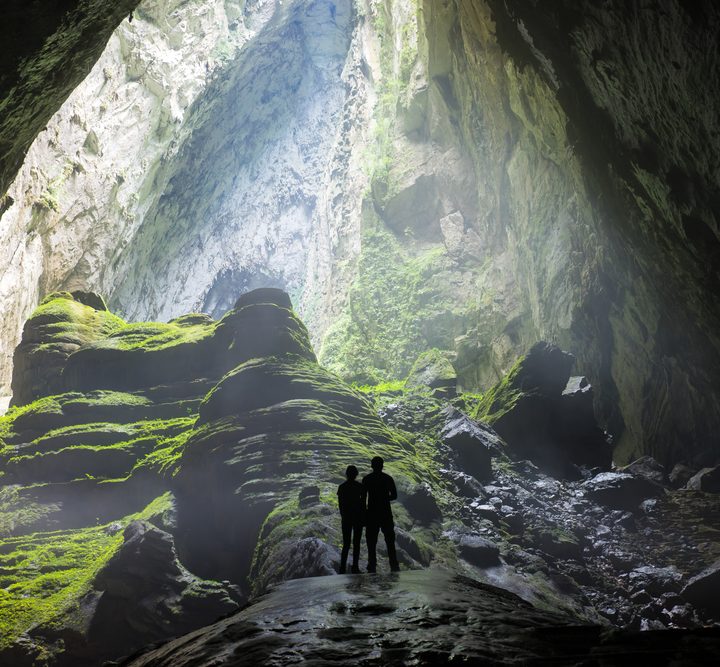
The mega-caves can only be visited on multi-day expeditions (which start at $330). My tour to Hang En, the world’s third-biggest cave, ranks among my favorite travel experiences anywhere. If you’re on a smaller budget, then there are loads of other caves in Phong Nha that you can visit.
The town itself is pleasant, with an unhurried vibe and a lovely riverside location — easily one of the real gems of Vietnam.
8. Hoi An
Kick back in this cute and calm historical town
Despite being rather packed with tourists, Hoi An still gets consistently rated by travelers as their favorite place in Vietnam. Any time I do any informal polling among other tourists I meet in Vietnam, Hoi An is at the top of their list!
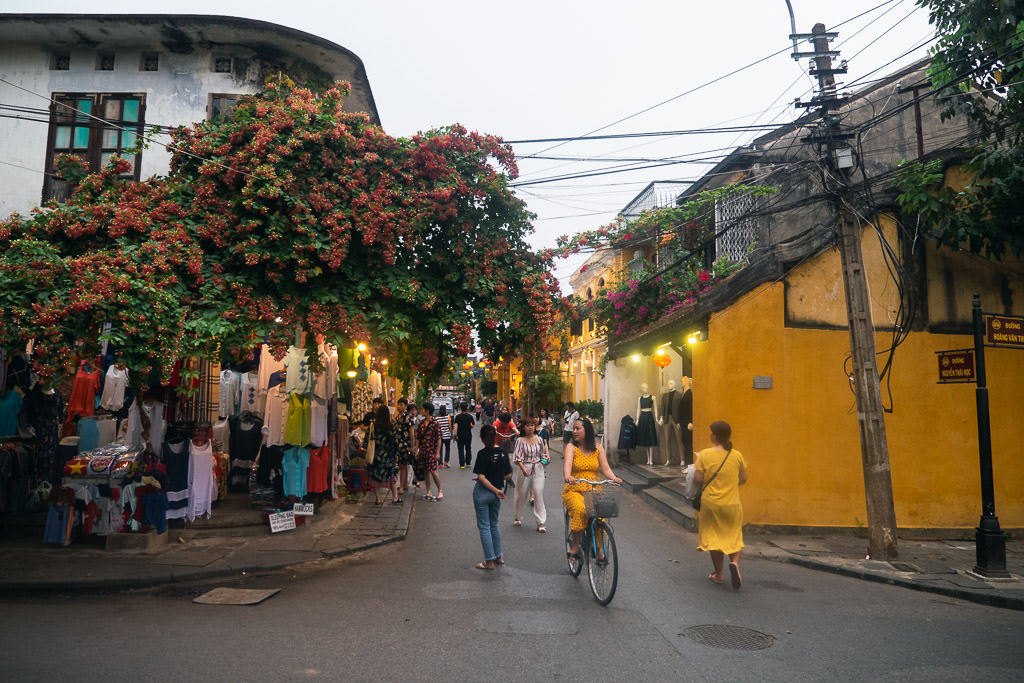
The delightfully well-preserved town of Hoi An was once a key post for Vietnam’s spice trade with China, Holland, Portugal, and other countries. Today, all the small two-story merchant quarters serve as all manner of restaurants, souvenir shops, and tailors (the town is famous for selling custom-tailored clothes at unbeatable prices).
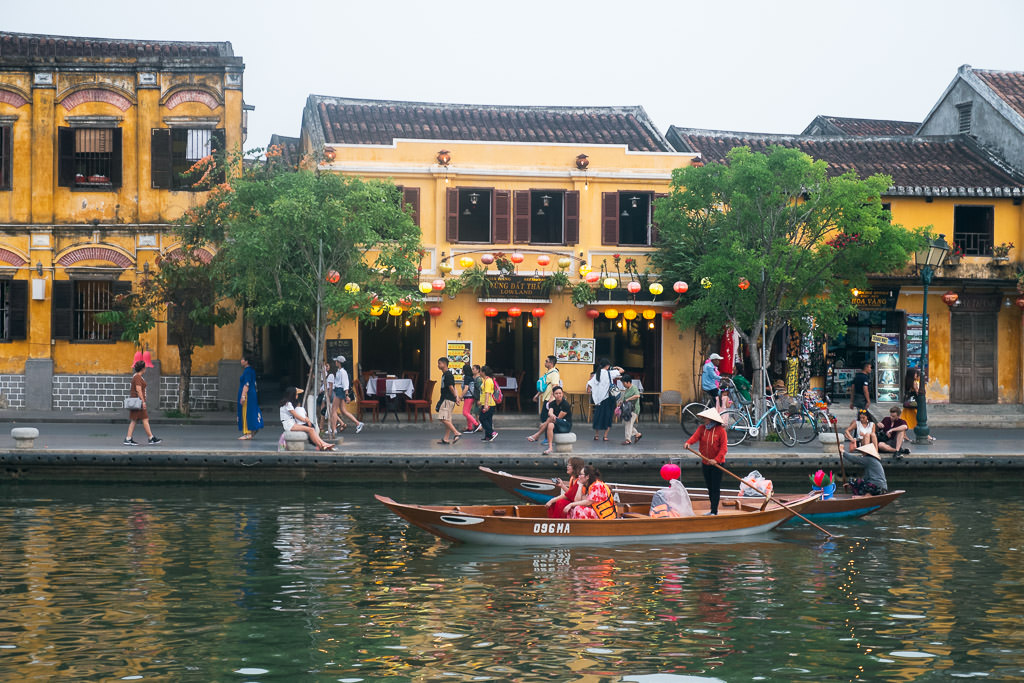
Hoi An’s UNESCO-protected Old Quarter is very tourist-friendly with numerous cute cafes, restaurants, and arty souvenir shops. The development has all been very tasteful and all the colorful lanterns hanging over the streets lend Hoi An a ton of charm. The center is also largely pedestrianized, giving you some welcome relief from the chaotic traffic of the bigger cities.
There are many things to do in Hoi An and it has some worthwhile beaches and sights nearby, making it a must-visit for anyone on their first trip to Vietnam.
9. My Son
Explore a complex of ruined Hindu temples near Hoi An
My Son is one of Vietnam’s eight UNESCO World Heritage Sites. Located in Quang Nam province, just an hour south of Da Nang. It’s a complex of ruined Hindu temples dating from as early as the 4th century.
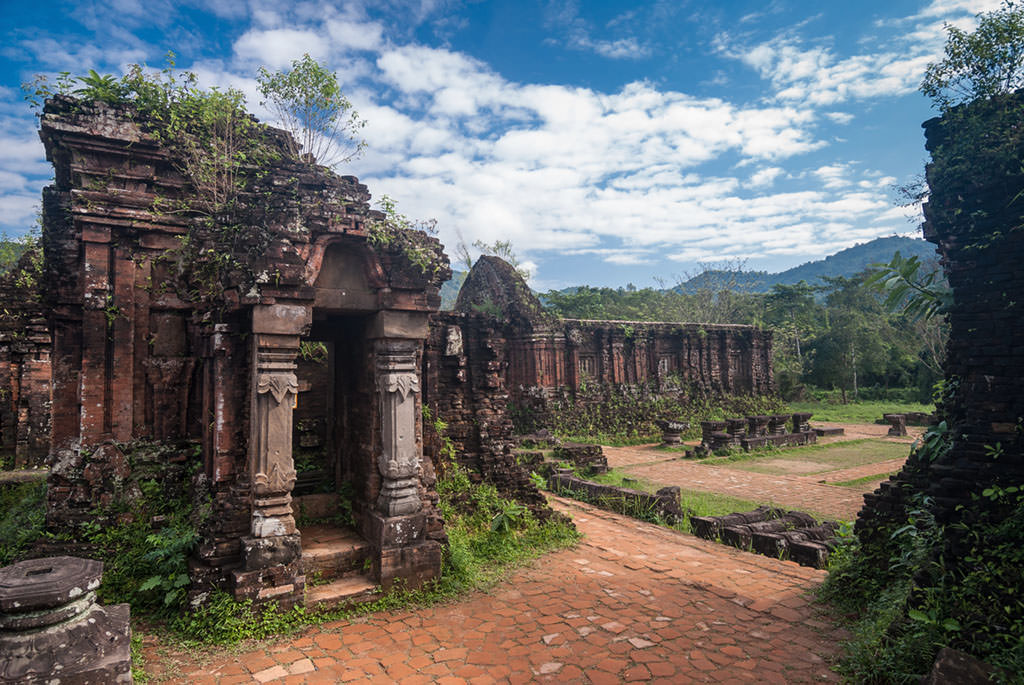
My Son has been compared to Indonesia’s Borobudur and the Angkor Wat complex in Cambodia, though on a smaller scale. The way the jungle has overtaken the ruins gives it a mystical quality that makes it worth the trip. Next to the ticket office is the Champa Museum, which explores the history of the temple complex, and if you happen to be there in the morning, there are traditional dancing performances at 9:45 am daily (except Mondays).
Roundtrip taxi hire to and from the site is around 10 USD from Hoi An, but it’s about half that to rent your own motorbike, which then gives you added flexibility if you want to explore other nearby sights, such as My Son Lake (where you can rent kayaks) and the Bang An Tower, an 11th-century tower still visited by worshippers.
10. Hue
Explore temples, tombs, and enjoy a smaller Vietnamese city
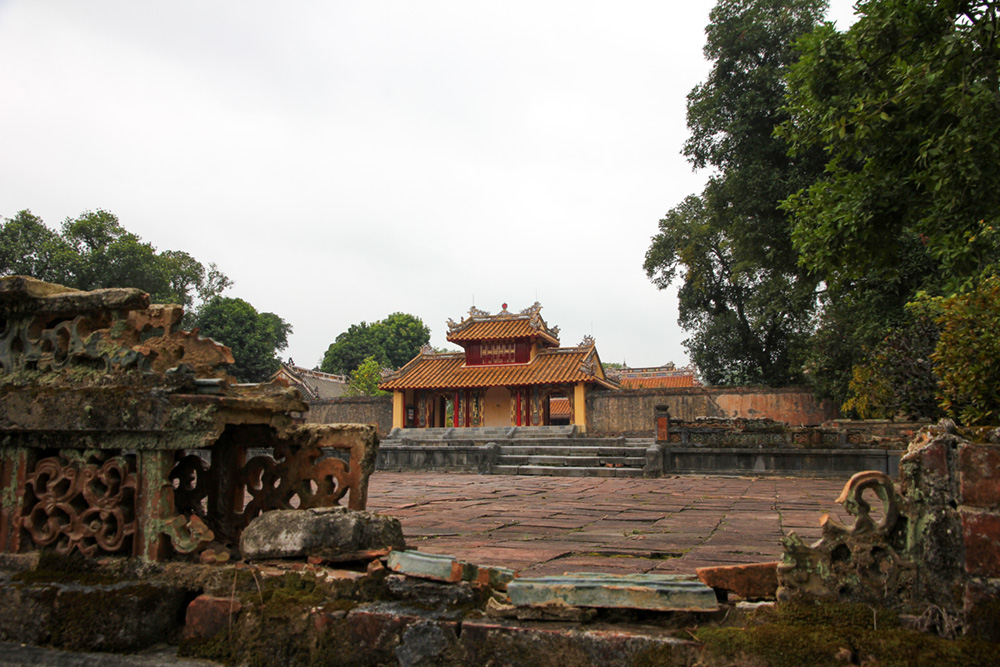
Hue (pronounced like ‘way’) is the perfect stop in central Vietnam if you’re interested in seeing many tombs, temples, and pagodas.
The main draw inside Hue city itself is the Imperial Citadel, but keep in mind that nearly everything at this site was bombed in the war so it can be seen relatively quickly.
Much more worthwhile are some of the sights around Hue. The Tombs of the Emperors, for instance, is very impressive and almost entirely intact. The sights around Hue offer some interesting examples of Vietnamese Buddhist aesthetics and architecture and are well worth a visit.
11. Ha Giang
Ride a motorbike through stunning mountain scenery
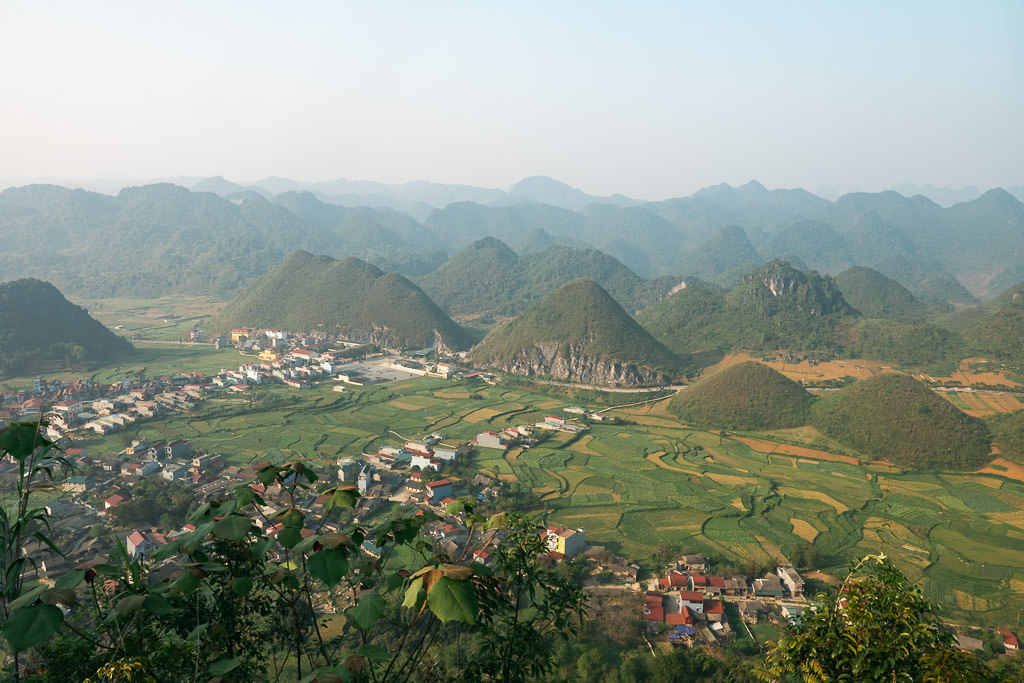
This is quite possibly the best thing I’ve done in all of Vietnam. The northern Ha Giang region near the border with China has some of the most gorgeous mountain scenery in the whole country, which has only become more accessible in recent years thanks to improved roads. The remote region is home to minorities such as the Hmong, who dress in colourful attire.
In Ha Giang, it’s all about the journey. The scenery is simply spectacular and best enjoyed on a motorbike trip. Many travelers do a loop starting and ending in Ha Giang city.
You can pay for motorbike drivers or go on an organized group tour, but the best way is to drive by yourself.
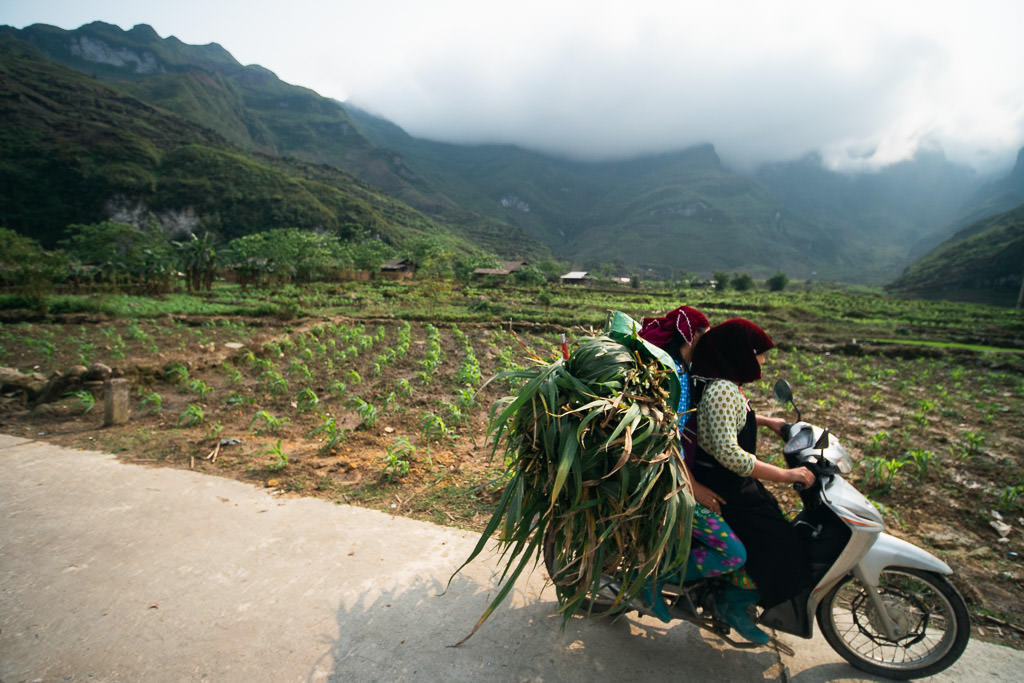
Ha Giang is perhaps not a place to tick off the list quickly if you’re in Vietnam on a shorter holiday. It’s best to have some time for Ha Giang to truly enjoy it. Plan for at least 3 days, but it’s better to have 5.
12. Mui Ne
Go sandboarding and kitesurfing
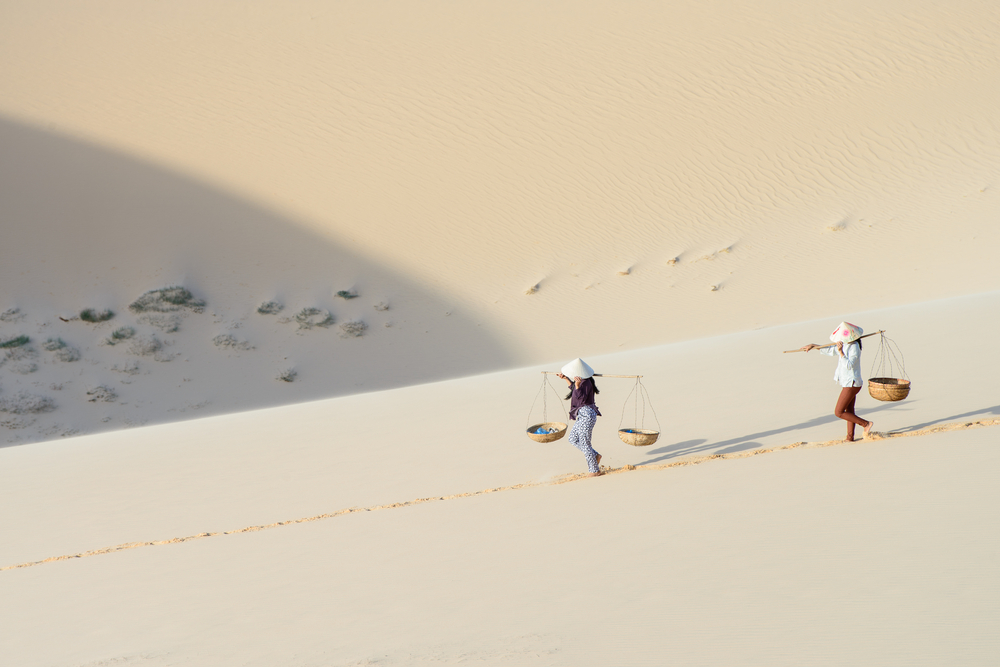
A nice spot to stay a couple of nights is the small town of Mui Ne on the southern coast. The beach is not the main attraction, as it is very thin and more enjoyed by kitesurfers than sunbathers, but it’s the resorts around Mui Ne and the fun sights in the area that make it worth a stop.
The old fishing village of Mui Ne highly picturesque and famed for its colourful fishing boats.
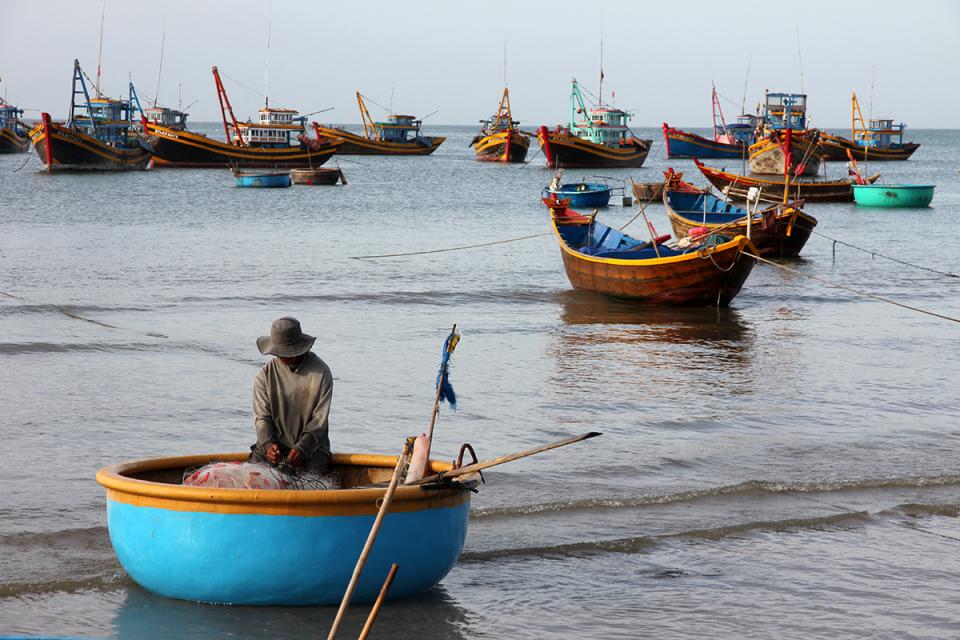
There is also a great little river canyon walk nearby, as well as white sand dunes where you can watch the sunrise or try sliding down the dunes on a board. When you find yourself in this sandy desert, you’ll surely wonder if you’re in Vietnam or in the Sahara Desert.
Mui Ne also has a big traveller scene and is a great place to relax with a lot of great budget-friendly accommodation.
13. Vinh Moc
See the Vietnam War tunnels
There are a number of insightful Vietnam War museums and sites — or the American War, as it’s known in Vietnam. The best of the bunch is the War Remnants Museum in Saigon, though you can expect it to be uncomfortable and heart-wrenching.
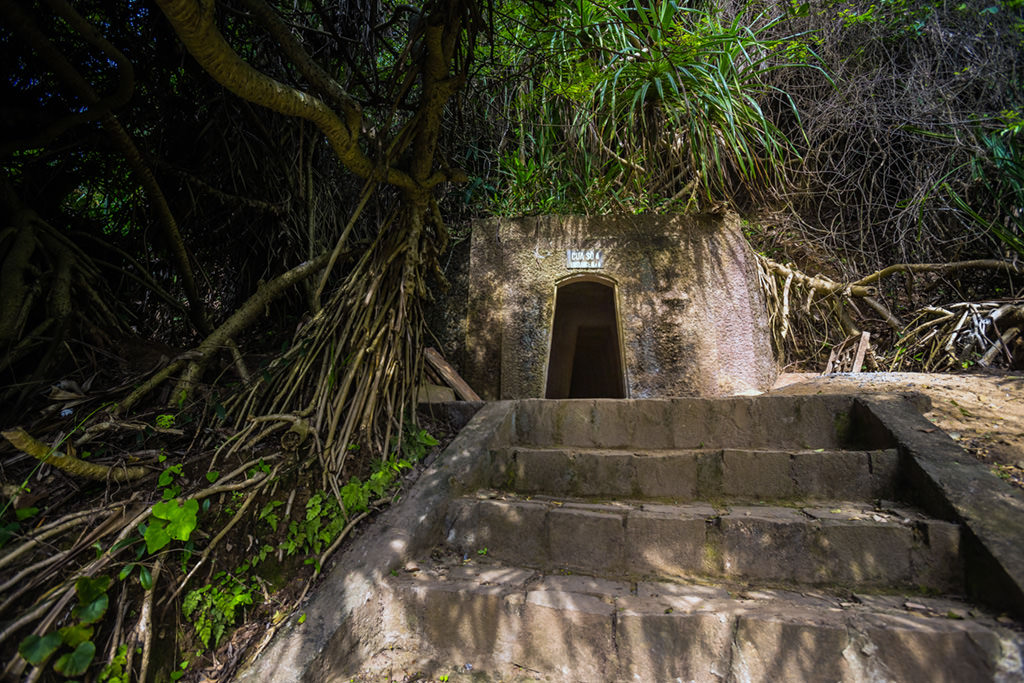
Not too far north of Da Nang and Hue are the tunnels of Vinh Moc, an elaborate complex of shelters built by villagers during the war. The tunnels were a success and no villagers lost their lives, though they had to live in absolutely awful conditions. It’s a very insightful place to see, and there are also the similar Cu Chi tunnels near Ho Chi Minh City in the south of Vietnam.
14. Da Nang
A bite-sized Vietnamese city makes for a nice stop
Vietnam’s fifth-largest city is also one of its liveliest. Danang is just a short distance up the coast from Hoi An, so it would be easy to lump these two together if you’re already visiting the one.
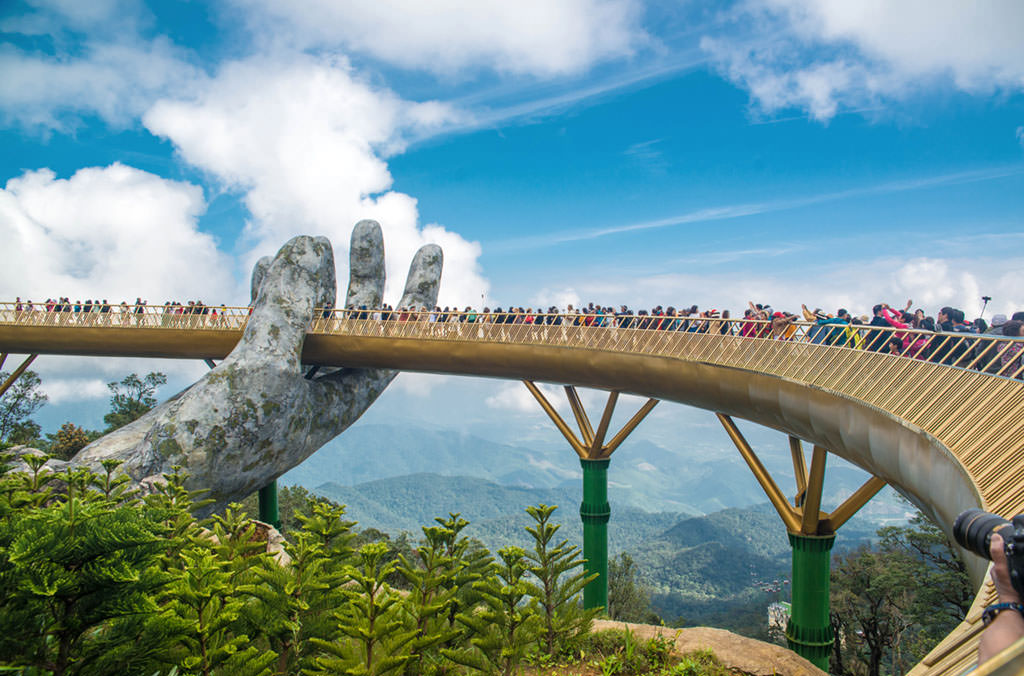
The city is a mix of coastal and urban, so you can start your day at the popular My Khe beach (over 6 miles long), or visit some of their famous theme parks. Visit SunWorld in the Ba Na Hills to see the famous bridge held up by two hand sculptures and beautiful views over the city, or Danang Wonders for thrill rides. Don’t miss the golden dragon bridge for a great photo op.
Immerse yourself in Vietnam’s history and architecture by visiting the Marble Mountains, five limestone hills named after the five elements. The towering karsts have underground caves, trails, pagodas, and 360° views of the city.
If other cities are too chaotic or polluted for your liking, you might quite enjoy Da Nang. While lacking the historical ambiance of Hanoi or the hustle-and-bustle of Saigon, Da Nang has a higher quality of life, attracting the attention of many expats and digital nomads.
15. Da Lat
Vietnam meets France in this former hill station
Da Lat is a mountain town in the Central Highlands. Once used as a hill station in colonial times (a place to escape the heat in summer), today it’s often called The City in the Forest due to its lush surroundings and sweeping greenery.
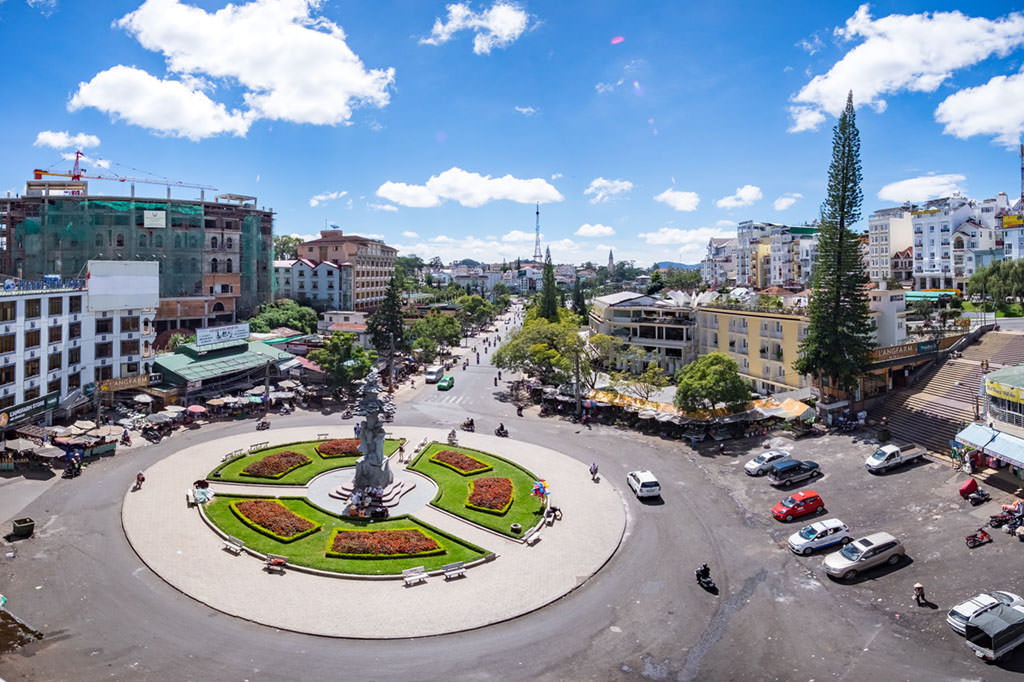
Its historical French influence is reflected in the architecture, which gives it the local nickname of ‘Little Paris’. The European feel is contrasted with Da Lat’s farming industry since it’s the best place for growing produce thanks to a year-round temperate climate (this also makes it colder and wetter than other parts of Vietnam, so dress accordingly).
There are farms and produce markets scattered throughout the city, so be sure to pick up some fruits or veggies while you’re here. Other than finding the perfect artichokes or avocados, Da Lat’s city has plenty to offer: various botanical gardens, pagodas and temples, and the gnarled and twisted “Crazy House”.
16. Nha Trang
Enjoy an unpretentious beach resort
Nha Trang is the perfect stopover if you’re craving a few days of relaxation. This coastal city is known for its white sand beaches and excellent weather, with little rain and lots of sunshine. It is known for its many beachside hotels and has quite an array of spas. One of the most popular is the I-Resort, known for its mud baths and thermal pools.
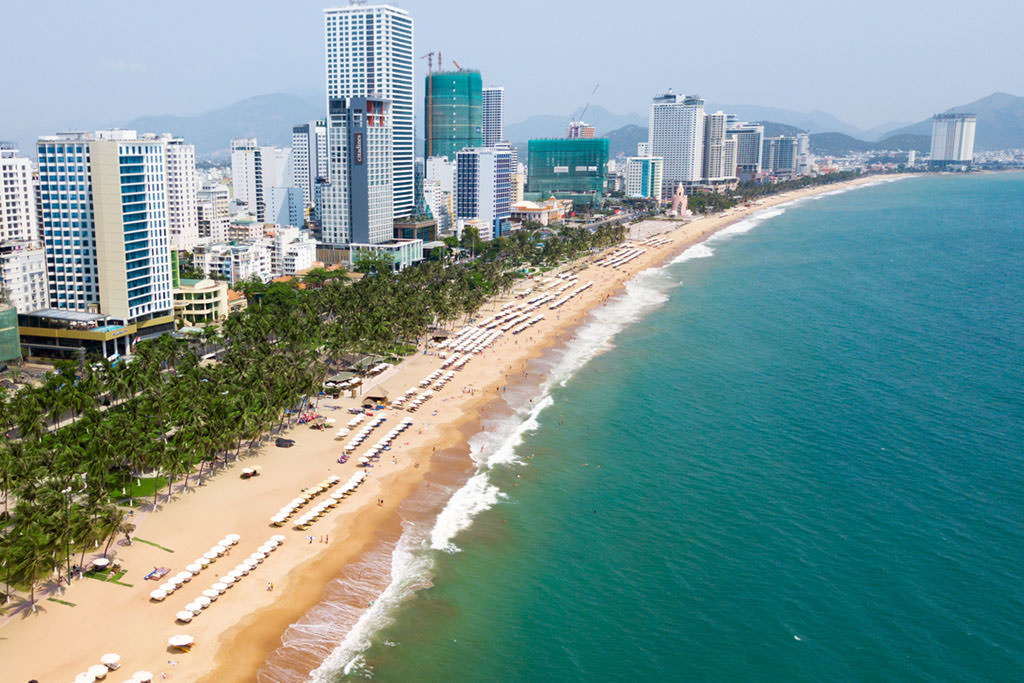
In earlier times Nha Trang catered heavily to Russian tourists and it’s also known as a bit of a backpacker party hub. While it’s not mainly for the sights, there are still several things to do. You can go temple hopping at the Long Son Pagoda and the Ponagar Tower, or go cliff-jumping and swimming at the Ba Ho waterfalls.
Families will ant to visit the huge Vinpearl water & amusement park, which is on its own island reached by cable car from the city. It’s also a fun day out if you’re with a group of friends and craving a break from your cultural discoveries in Vietnam.
If you don’t have time to stop between Ho Chi Minh City and Nha Trang, maximize your time by taking one of the overnight sleeper trains. When looking for hotels on a budget, don’t book too close to the beach. Instead, save money by staying further inland.
17. Ho Chi Minh City
Visit the southern commercial capital, a.k.a. Saigon
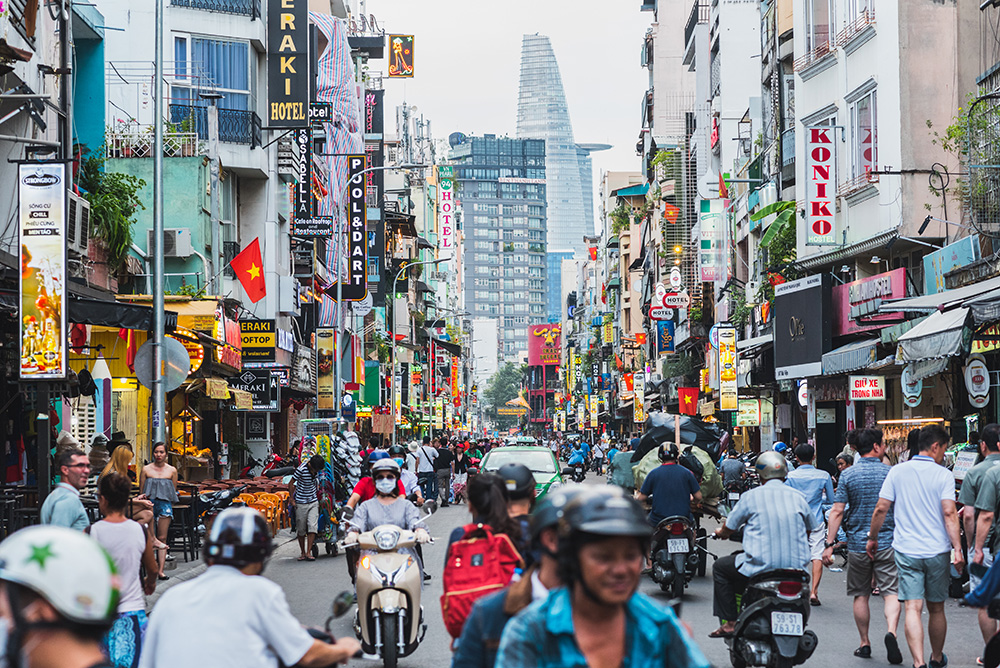
Ho Chi Minh City (previously known as Saigon) is Vietnam’s second-largest city. Being on the far opposite side of the country to Hanoi, it has a very different vibe.
Hanoi is more traditional with windy market streets, old temples, and tree-lined streets. Saigon is a lot more cosmopolitan and Western-oriented, having become the fast-paced commercial capital of Vietnam.
Many backpackers love Saigon because it’s a great place to party. But it’s also an interesting cultural stop, thanks to its War Remnants Museum, huge street markets, and distinct cuisine.
18. The Mekong Delta
See floating markets and rural scenes
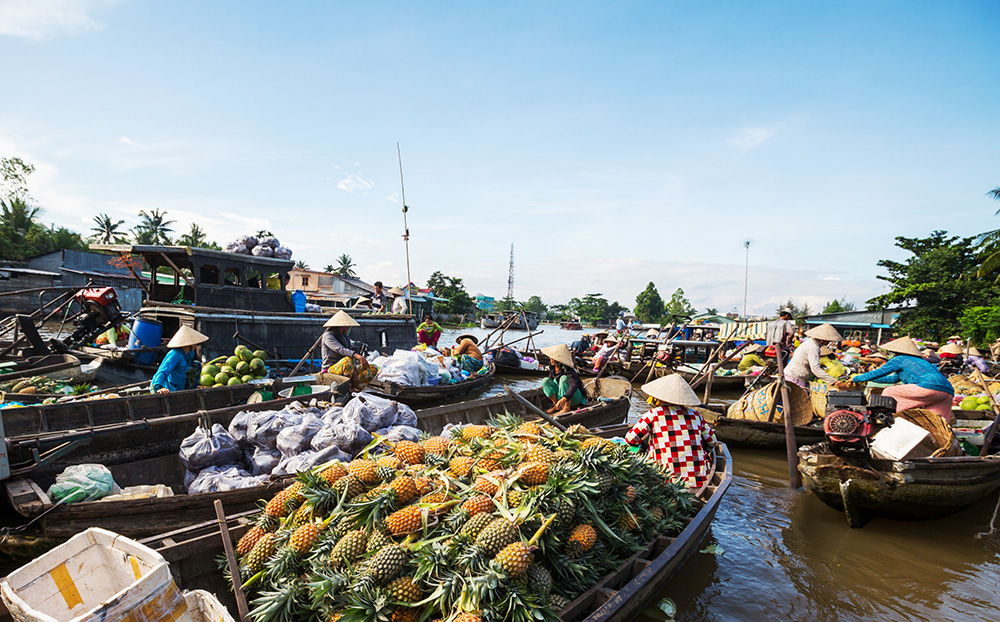
South Vietnam is where the mighty Mekong river splits into hundreds of smaller tendrils, forming the Mekong Delta. It’s formed a vast maze of rivers, rice paddies, and riverine islands.
One of the highlights of the Mekong Delta are the floating markets, where boats dock together on the river to sell all manner of fruit and vegetables. One of the best places to see floating markets is at the city of Can Tho.
There are many organized tours to the Mekong Delta, including day-trips from Saigon, but they can be quite cookie-cutter. I recommend staying in a guesthouse or homestay somewhere in or near Can Tho, and checking out the markets by yourself or with a local guide. Driving around the rice fields and waterways on a scooter is also a delightful way to get a taste of life in the Mekong Delta.
19. Bao Loc
A gentle city among the tea fields
Although Bao Loc is on the route from Ho Chi Minh to Da Lat, it’s overlooked by many travelers and still passes largely under the radar. If you consider yourself a tea lover, this will be an enjoyable place to visit, since the Lam Dong province is known for its tea production.
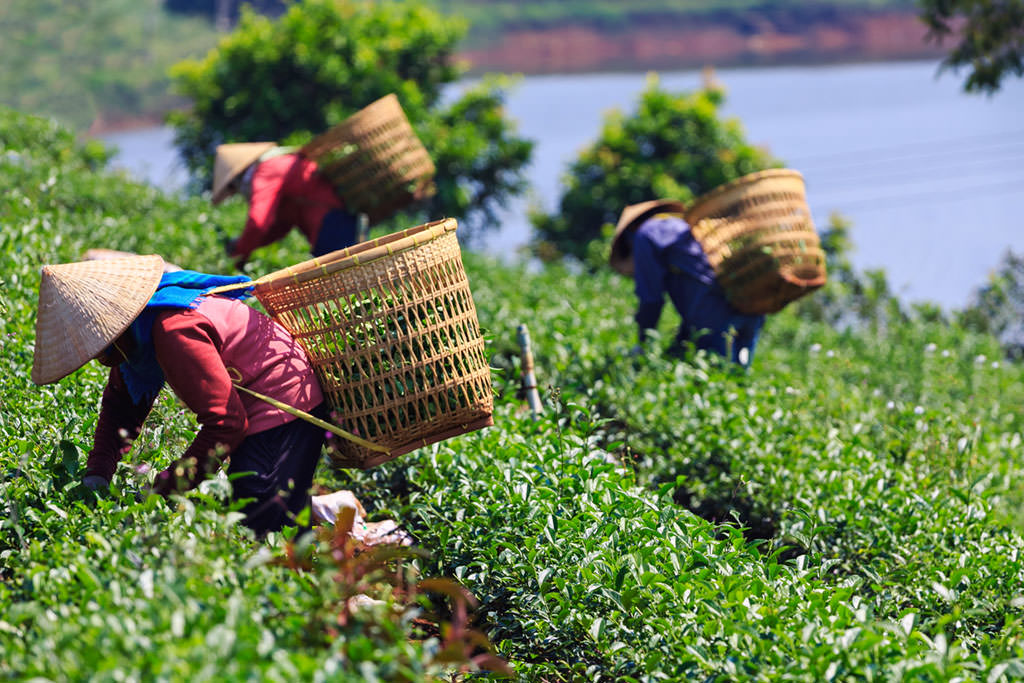
Bao Loc is covered in lush, mountainous tea fields, with the most famous tea field being Tam Chau tea hill. This part of Vietnam is well-known for its oolong tea production, and if you take a tour of the fields you can learn about the growing and harvesting process. Finish by visiting the tea shop, where you can purchase a few souvenirs and sample the different types of tea (including artichoke tea).
Another popular place with locals is the Dambri Waterfall, which also has a tourist center with a pool and amusement rides for kids. The waterfall itself is spectacular to see and would make a notable stop during your visit. If you’re spending the night, start your morning by watching the sun rise over the Linh Quy Phap An Pagoda.
20. Phu Quoc island
Vietnam’s premier resort island
Phu Quoc is Vietnam’s answer to Thailand’s Phuket, having designated it as a key tourism development zone. It offers Vietnam’s best selection of upmarket resorts, villas, and beach clubs.
It’s not nearly as built-up as Thailand’s counterpart though, so you can definitely find uncrowded beaches in Phu Quoc.
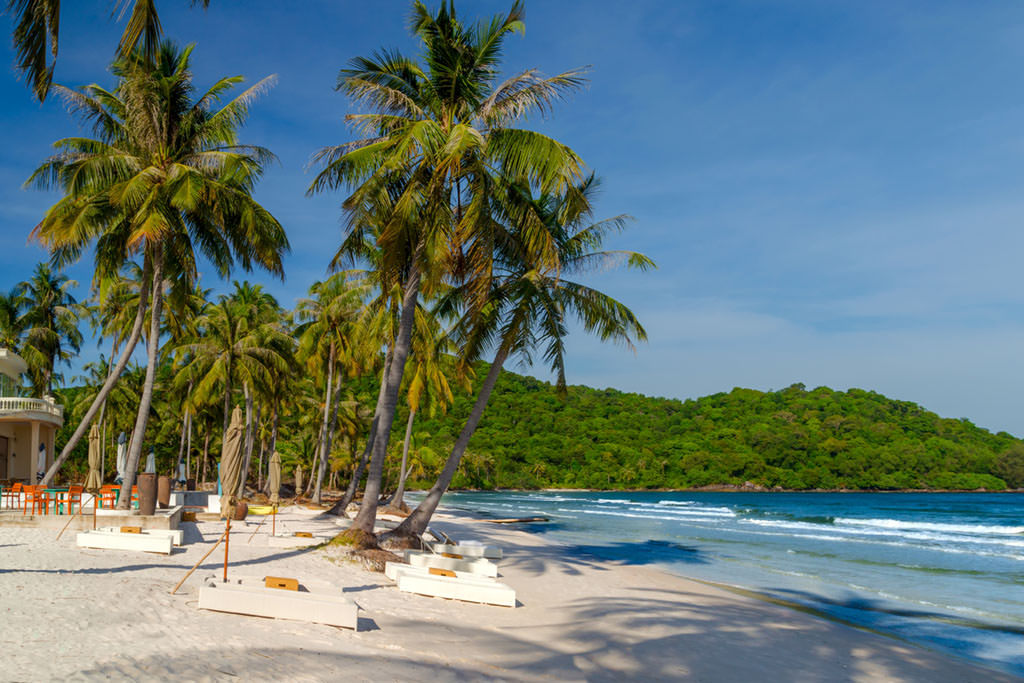
If you want to be at the beach, Sao Beach is the best spot for snorkeling or just relaxing on the sand. If you want to try something more memorable, visit a pepper farm or learn to make a fish sauce (vestiges left from the island’s pre-tourism days when food export was its primary industry). There’s also a great night market with tons of street food. Try bún kèn, a rich, fishy soup with lemongrass and papaya over rice noodles.
Although its tourism reach is expanding and new hotels are being built left and right, the ideal area to stay is around Duong Dong town. Long Beach, one of the island’s most popular beaches, is a good choice for central access to the rest of the island.
21. Con Dao Islands
A hidden gem if you’re seeking less-touristed islands
In spite of travel bloggers and Instagram photography, the Con Dao islands are still one of the best-kept secrets of places to visit in Vietnam. The archipelago has 16 islands; Con Son is the largest and would be the best place to base your stay.
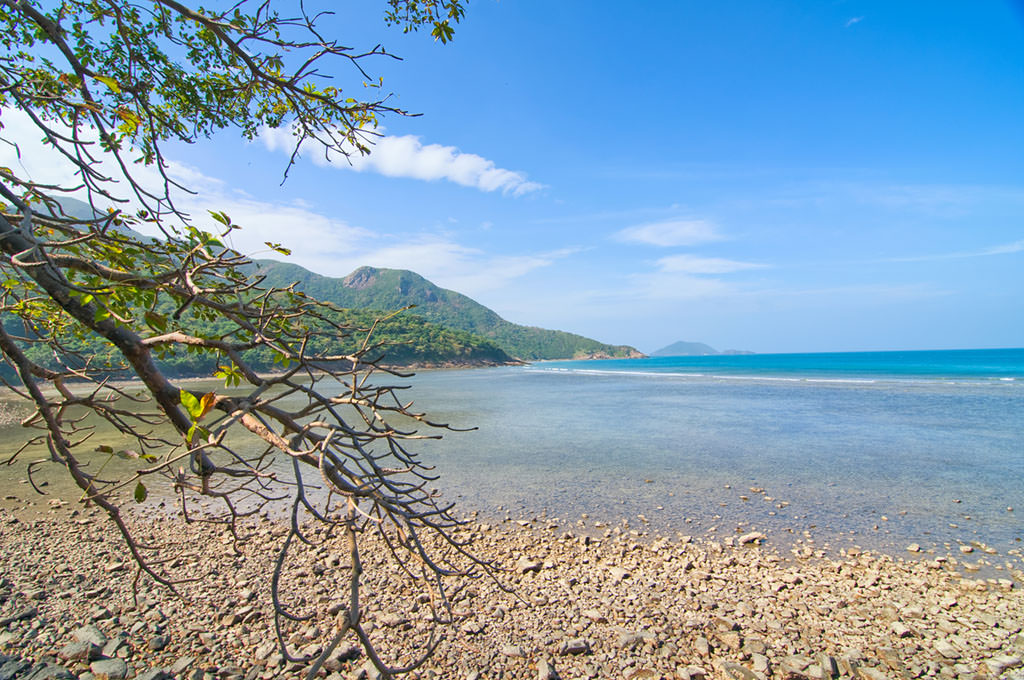
There is a plethora of things to do here. Because of the low tourism, the beaches are pristine and thanks to being so far offshore, offer some of the best diving and snorkeling in Vietnam. The water here is some of the bluest and clearest ever, so definitely make time to hit up the beach! Otherwise, you can explore Con Dao National Park, visit the Con Dao Museum to see the old 18th-century French colonial prisons, or even book a wellness retreat at a private hotel.
We don’t doubt you would visit Con Dao for the beaches, so keep in mind that many of them are thin and only accessible at low tide. Do your research ahead of time with tide schedules to avoid being disappointed.
22. Ben Tre
Lovely riverside scenery in the Mekong Delta
Located along the Mekong Delta, Ben Tre is an easy day trip from Ho Chi Minh City. The city is in an area renowned for its coconut production, so keep an eye out for signs saying dừa xiêm—small, extremely sweet coconuts.
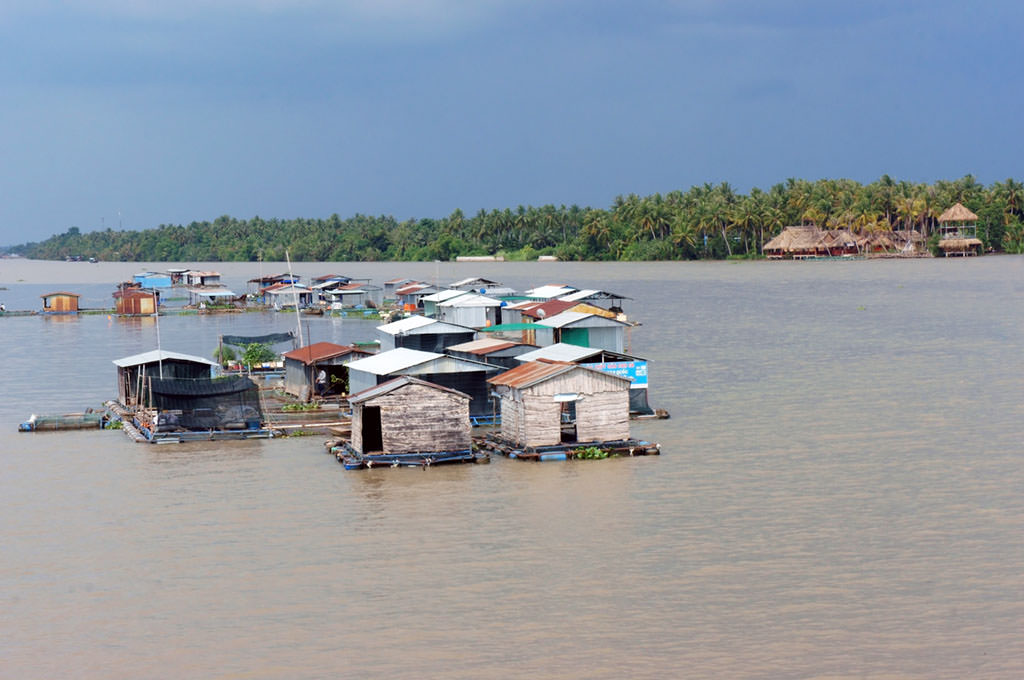
Most Mekong Delta tours stop by the larger Can Tho or My Tho, making Ben Tre a nice alternative. Nevertheless, many outings to Ben Tre are organized by tour companies so even if you forge your own path, this won’t be a low-key, off-the-beaten-track kind of excursion. But you get to experience some interesting sights so it’s worth the trip.
The boat ride down the delta shows another way of life since many Vietnamese still make their living along the delta. Visit a coconut grove and taste fresh fruit at an island orchard by boat, before following the rural roads inland to visit a honey farm and taste fresh honey. You can even catch snakehead fish for lunch and have it cooked fresh.
Vietnam planning tips
There’s much more to see in Vietnam than most people can fit into a single trip, so if you’re having trouble deciding on your exact itinerary, you shouldn’t miss my tips for planning a Vietnam trip.
Don’t underestimate Vietnam’s size; its length is similar to that of the entire West Coast USA. If you want to see several places in the north, center, and south, count on needing at least 3 weeks.
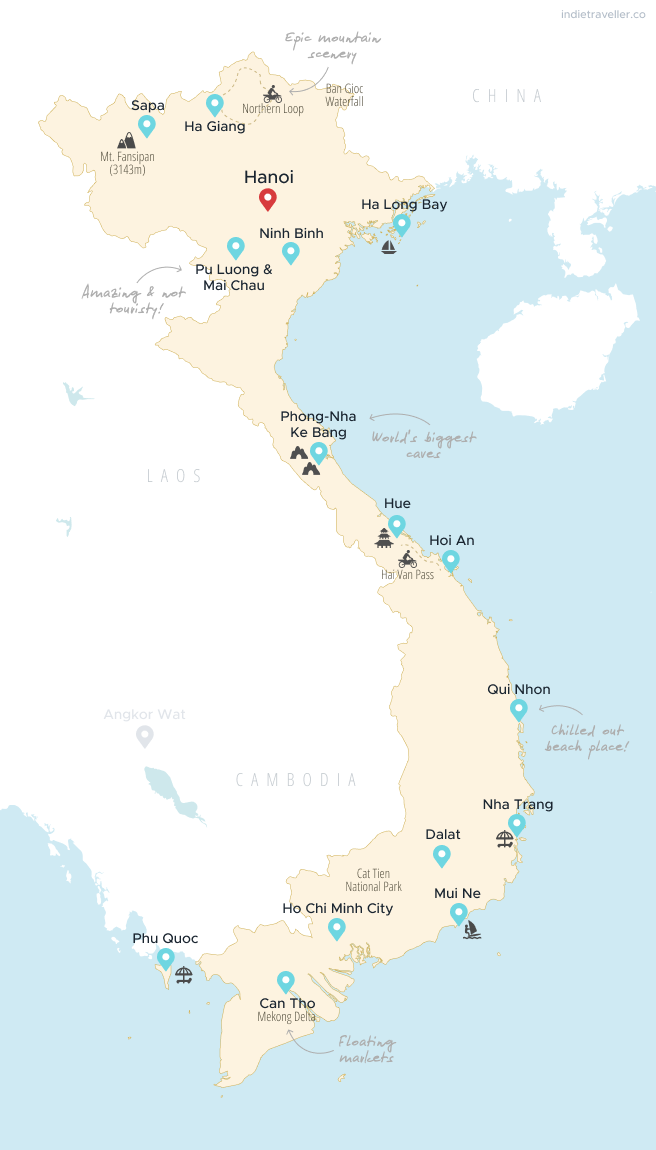
A common Vietnam itinerary is to visit Hanoi, Sapa, Ha Long Bay, Hue, Hoi An, and finally Ho Chi Minh City. Yes, that’s a lot of places starting with an ‘H’. If you need more inspiration, just hop over to my Vietnam country overview for all the relevant articles.
Some links may be affiliate links, meaning I may earn commission from products or services I recommend. For more, see site policies.
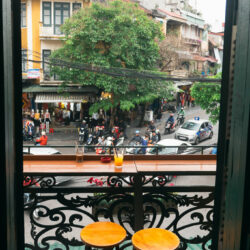
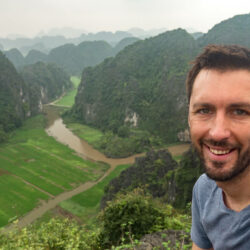
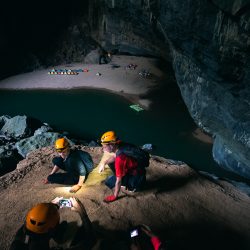
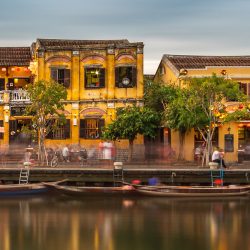
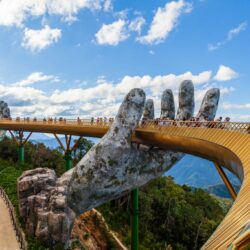
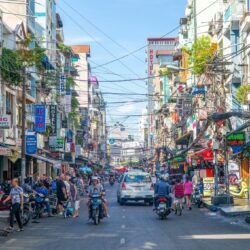
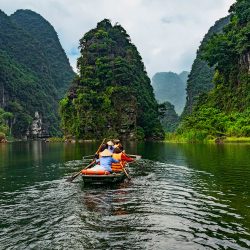




We are planning a trip to Vietnam towards the end of 2024 or beginning 2025. We are “older adults” (think mid 70’s) and will be booking the trip with an upscale tour operator (Asia desk). The owner has lived in Vietnam and his wife is Vietnamese. Your travel blog is fantastic and has given us ideas of the North, central and south. In your opinion, when is the best time to go? We will have about 3 weeks. Our biggest issue-where is a beautiful beach/water with great snorkeling and beautiful vistas that we don’t have to take 2 planes and many boats to get to. . We have been to Thailand (not the beaches) Cambodia and Laos. I wish Palawan and Raja Ampat was not so far away from Vietnam and hard to get to. We want an upscale resort without a ton of people. Any thoughts on any place in Vietnam that would fit the bill or will we have to find a close place that isn’t overrun with tourists in Southern Thailand or somewhere else. I looked at your thoughts on Can Dao, but my Vietnam friends who live in the US said go to Thailand! They do not find any beaches appealing from a mass tourist destination, dirty or not ver attractive.Any thoughts would be much appreciated!
Apologies for my slow reply, Sandy! The best time depends… I like winter, though it can be a little misty and cold in the north. Spring (e.g. April) is probably your best bet for nice mild weather in the north and not-too-hot weather in the south.
To be very honest I agree with your friends. I’m not a huge fan of Vietnamese beaches… they’re fine, but they don’t live up to any kind of idyllic tropical beach image. The snorkelling is often really bad both in terms of visibility and the number of fishes. Phu Quoc has nice beaches though. I’d suggest a resort there, or perhaps one of the Koh Chang islands in Thailand. They are developed, but aren’t quite as busy as other Thai islands. Koh Kood might be what you’re looking for. It wasn’t quite my jam as I was travelling as a backpacker at the time and not looking for resorts, but the beaches are absolutely gorgeous and the snorkelling was fantastic.